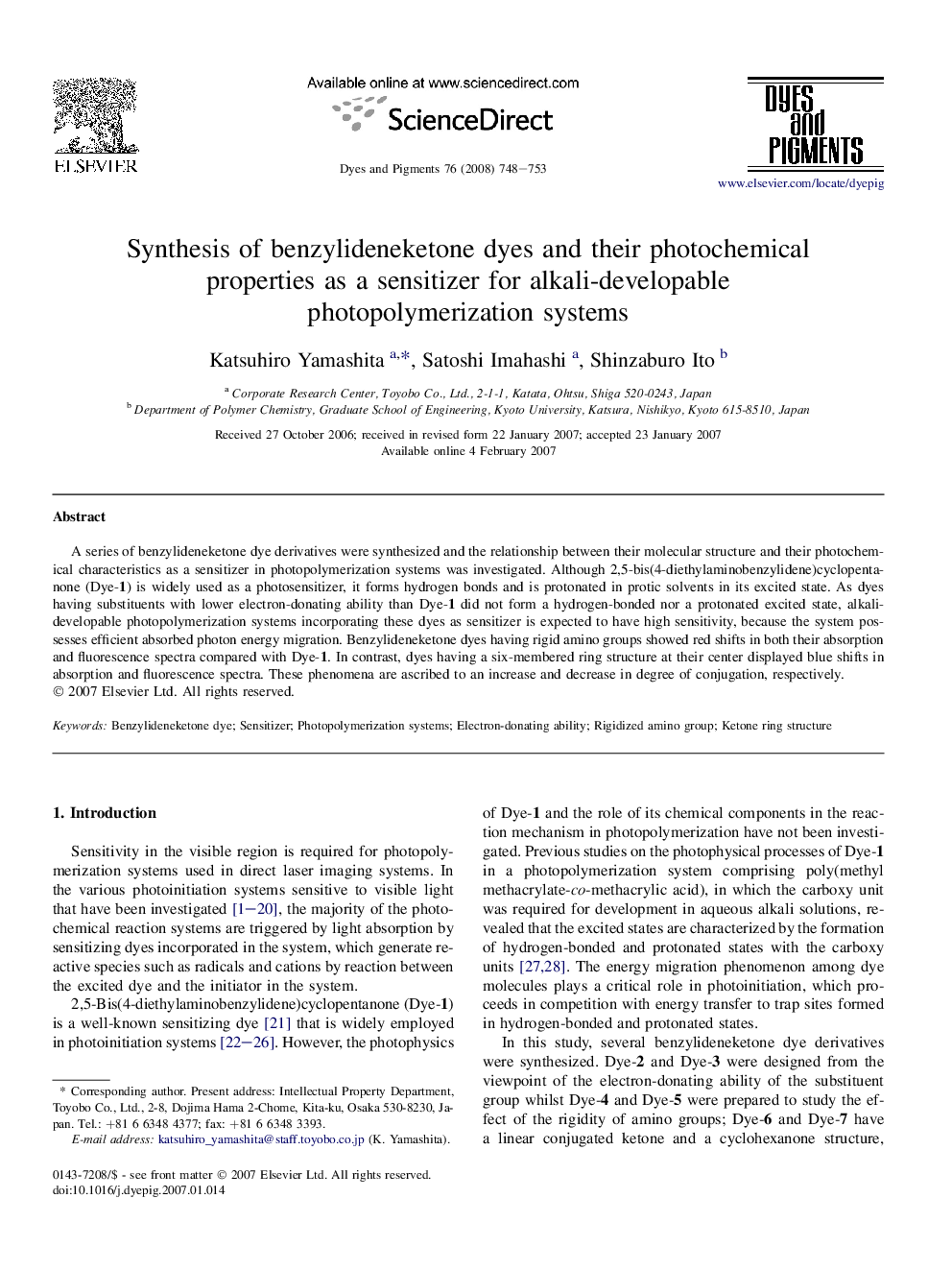| Article ID | Journal | Published Year | Pages | File Type |
|---|---|---|---|---|
| 177795 | Dyes and Pigments | 2008 | 6 Pages |
A series of benzylideneketone dye derivatives were synthesized and the relationship between their molecular structure and their photochemical characteristics as a sensitizer in photopolymerization systems was investigated. Although 2,5-bis(4-diethylaminobenzylidene)cyclopentanone (Dye-1) is widely used as a photosensitizer, it forms hydrogen bonds and is protonated in protic solvents in its excited state. As dyes having substituents with lower electron-donating ability than Dye-1 did not form a hydrogen-bonded nor a protonated excited state, alkali-developable photopolymerization systems incorporating these dyes as sensitizer is expected to have high sensitivity, because the system possesses efficient absorbed photon energy migration. Benzylideneketone dyes having rigid amino groups showed red shifts in both their absorption and fluorescence spectra compared with Dye-1. In contrast, dyes having a six-membered ring structure at their center displayed blue shifts in absorption and fluorescence spectra. These phenomena are ascribed to an increase and decrease in degree of conjugation, respectively.
